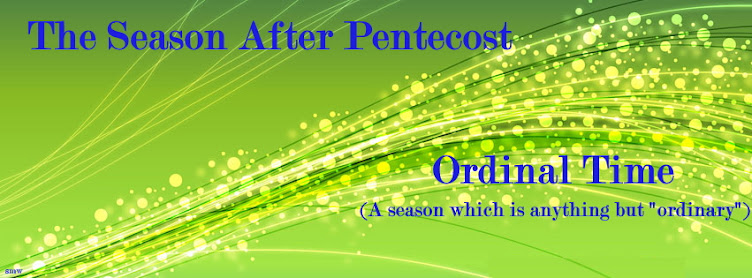Ember days (corruption from Lat. Quatuor Tempora, four times) are the days at the beginning of the seasons ordered by the Church as days of fast and abstinence. They were definitely arranged and prescribed for the entire Church by Pope Gregory VII (1073-1085) for the Wednesday, Friday, and Saturday after 13 December (S. Lucia), after Ash Wednesday, after Whitsunday, and after 14 September (Exaltation of the Cross). The purpose of their introduction, besides the general one intended by all prayer and fasting, was to thank God for the gifts of nature, to teach men to make use of them in moderation, and to assist the needy. The immediate occasion was the practice of the heathens of Rome. The Romans were originally given to agriculture, and their native gods belonged to the same class. At the beginning of the time for seeding and harvesting religious ceremonies were performed to implore the help of their deities: in June for a bountiful harvest, in September for a rich vintage, and in December for the seeding; hence their feriae sementivae, feriae messis, and feri vindimiales. The Church, when converting heathen nations, has always tried to sanctify any practices which could be utilized for a good purpose. At first the Church in Rome had fasts in June, September, and December; the exact days were not fixed but were announced by the priests. The "Liber Pontificalis" ascribes to Pope Callistus (217-222) a law ordering: the fast, but probably it is older. Leo the Great (440-461) considers it an Apostolic institution. When the fourth season was added cannot be ascertained, but Gelasius (492-496) speaks of all four. This pope also permitted the conferring of priesthood and deaconship on the Saturdays of ember week--these were formerly given only at Easter. Before Gelasius the ember days were known only in Rome, but after his time their observance spread. They were brought into England by St. Augustine; into Gaul and Germany by the Carlovingians. Spain adopted them with the Roman Liturgy in the eleventh century. They were introduced by St. Charles Borromeo into Milan. The Eastern Church does not know them. The present Roman Missal, in the formulary for the Ember days, retains in part the old practice of lessons from Scripture in addition to the ordinary two: for the Wednesdays three, for the Saturdays six, and seven for the Saturday in December. Some of these lessons contain promises of a bountiful harvest for those that serve God.
http://www.newadvent.org/cathen/05399b.htm
For some good information on the Autumn Ember Days, see the FishEaters page.
The Origin of the Word:
The origin of the word "ember" in "Ember Days" is not obvious, not even to those who know Latin. According to the Catholic Encyclopedia, "Ember" is a corruption (or we might say, a contraction) of the Latin phrase Quatuor Tempora, which simply means "four times," since the Ember Days are celebrated four times per year.
Optional Today:
With the revision of the liturgical calendar in 1969, the Vatican left the celebration of Ember Days up to the discretion of each national conference of bishops. They're commonly celebrated in Europe, particularly in rural areas.
In the United States, the bishops' conference has decided not to celebrate them, but individual Catholics can and many traditional Catholics still do, because it's a nice way to focus our minds on the changing of the liturgical seasons and the seasons of the year. The Ember Days that fall during Lent and Advent are especially useful to remind children of the reasons for those seasons.
Fasting and Abstinence:
The Ember Days are celebrated with fasting (no food between meals) and half-abstinence, meaning that meat is allowed at one meal per day. (If you observe the traditional Friday abstinence from meat, then you would observe complete abstinence on an Ember Friday.)
As always, such fasting and abstinence has a greater purpose. As the Catholic Encyclopedia notes, through these activities, and through prayer, we use the Ember Days to "thank God for the gifts of nature, . . . teach men to make use of them in moderation, and . . . assist the needy."
http://catholicism.about.com/od/holydaysandholidays/p/Ember_Days.htm
Subscribe to:
Post Comments (Atom)
Feast of the Assumption
The Feast of the Assumption of the Blessed Virgin Mary - another example of "not-so-ordinary" days! These are COUNTING days - and...

-
In a recent post from Alan/Rhology on Beggars All , he said: >> sw: So you're confirming (again) that your local >> churc...
-
A friend of mine posed the following to me... Thoughts? Change occurs in official (non-defined) Catholic doctrine like this: 1. The d...
-
bossmanham Says: Tuesday, February 09, 2010 9:34:00 AM Hi CathApol, I know this post isn't on transubstantiation, but I saw your r...

No comments:
Post a Comment
Keep in mind while posting:
1) Please respond ON TOPIC to the article at hand.
2) Posts more than 4 weeks old are set to automatically save new comments for moderation - so your comment may not show up immediately if you're responding to an older post.
3) The "Spam Filter" is on - and randomly messages get caught in that filter. I have no control over which messages get caught in the spam filter and those that do must wait for me to mark them as "not spam." A message caught by the spam filter may show up for a moment, making you think it posted, and then disappear. Do not assume I have deleted your comment, it's probably just the spam filter and it will show up.